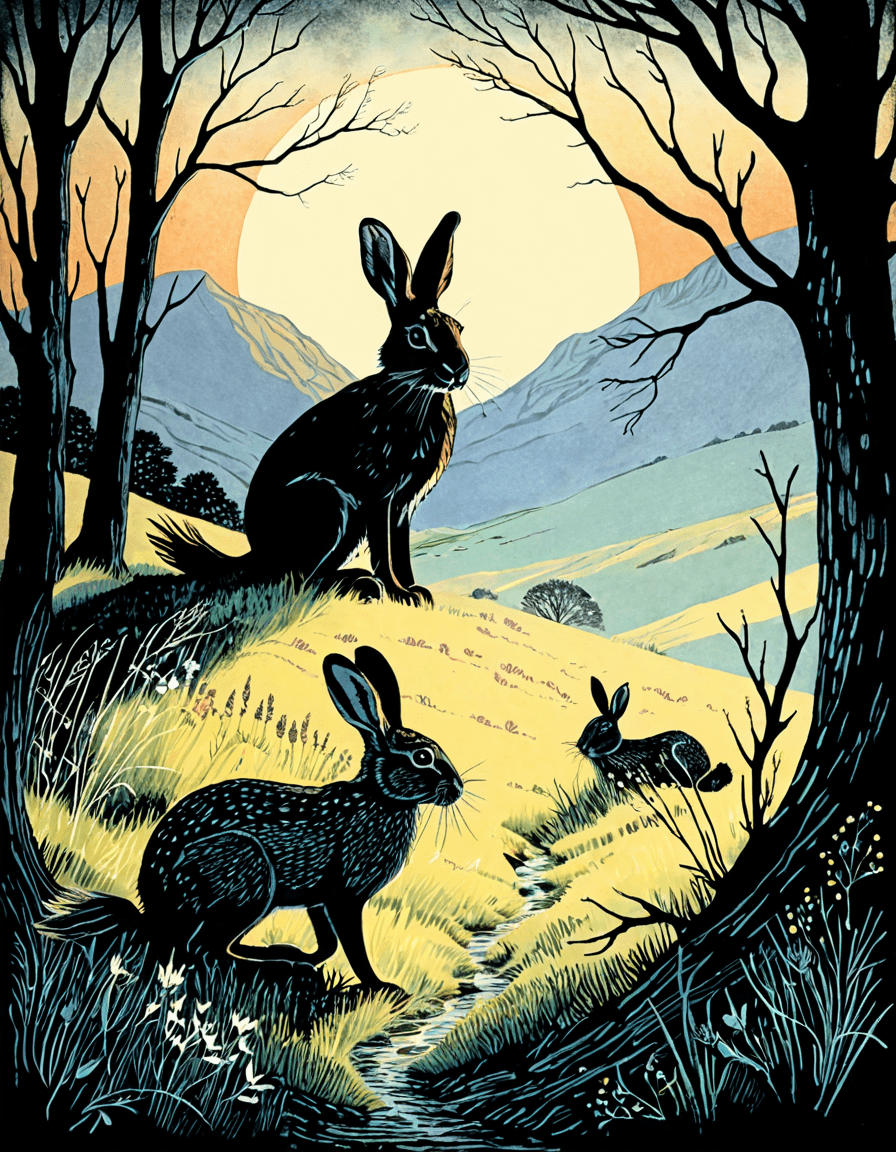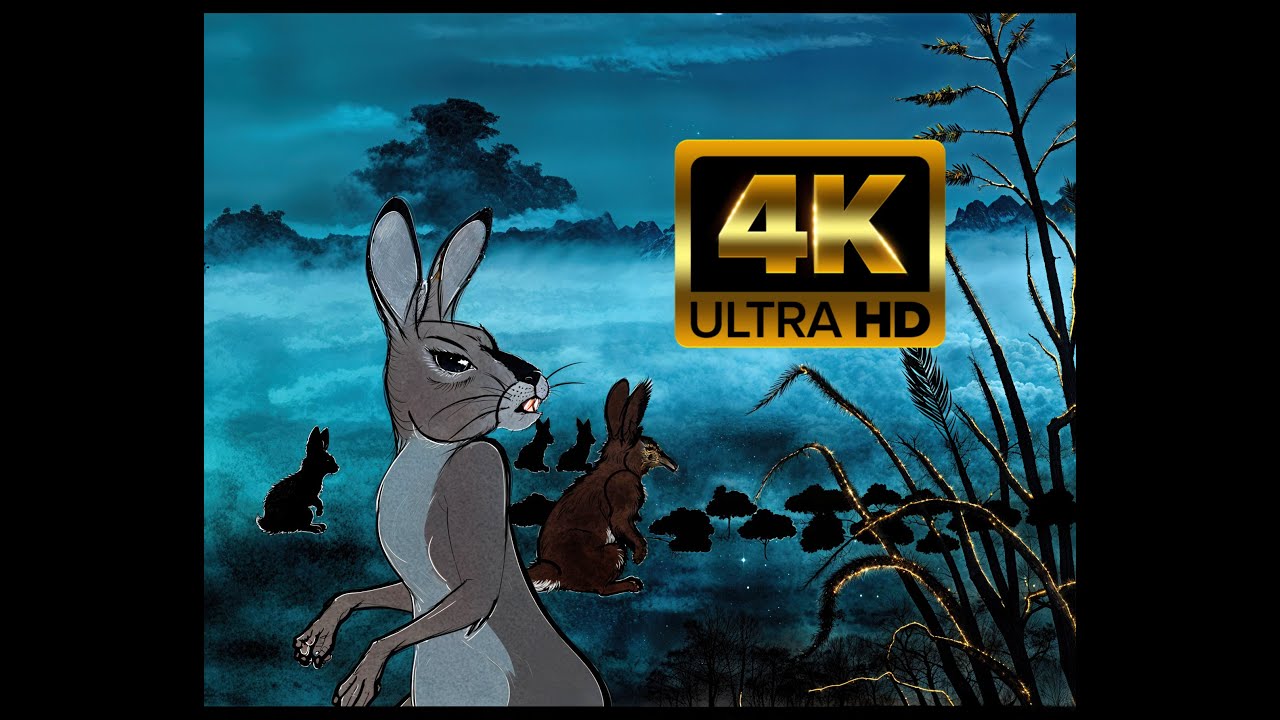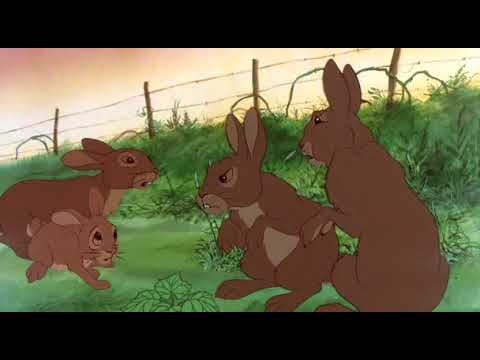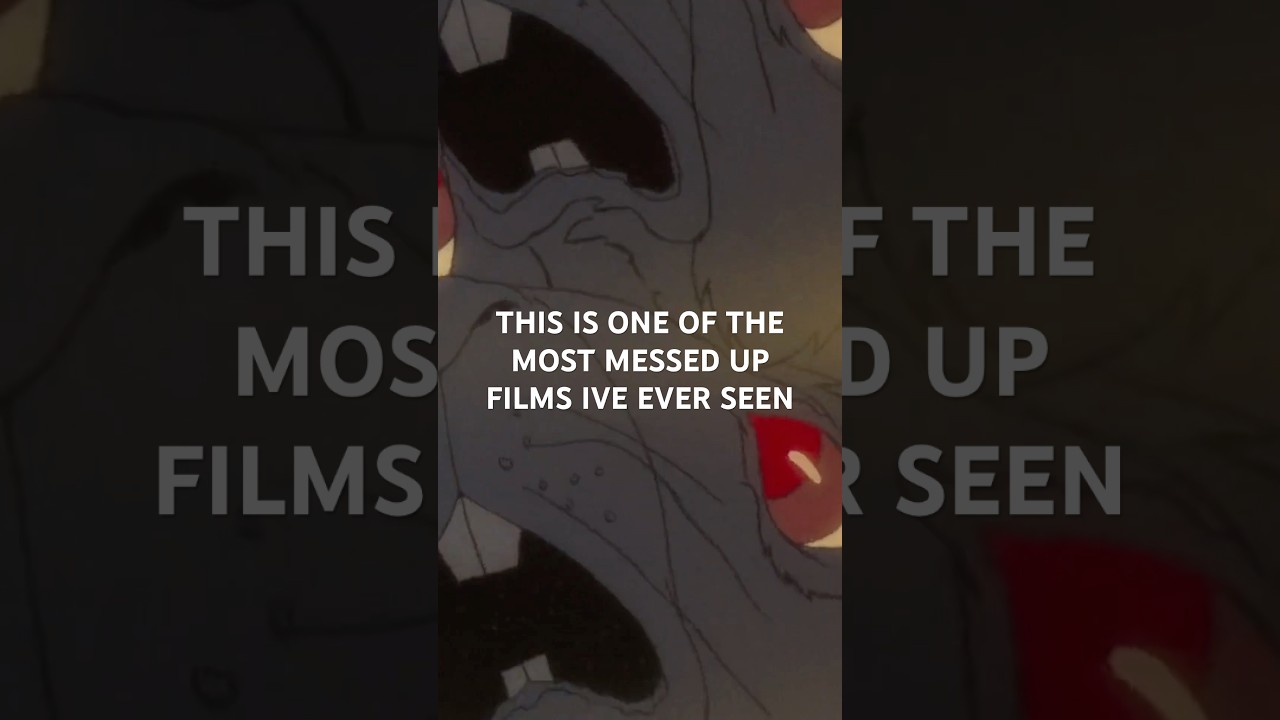The animated adaptation of Watership Down, based on Richard Adams’s acclaimed novel, has been both loved and criticized for decades. What made this film infamous wasn’t just its profound themes, but the graphic imagery that has left audiences reeling. This isn’t a fluffy, cute flick like many of Disney’s classic animations. Instead, it exposes the raw brutality of nature, which can be quite unsettling, especially considering the victims are often portrayed as adorable animals, pets to many viewers. Let’s hop into the world of Watership Down and explore the imagery that cemented its legacy—an equally whimsical and horrifying journey.
7 Shocking Visuals from Watership Down That Define Its Legacy
The standout moment in Watership Down is without a doubt when the rabbits stumble upon the gruesome fate of Cowslip’s Warren. The chilling contrast between animated rabbits and the stark reality of their predation delivers a jolt that resonates with kids and adults alike. Parents have often debated the film’s appropriateness for younger audiences, prompting them to reconsider their movie nights. This shocking visual invites discussions akin to those around other intense animated classics, exemplifying why Watership Down remains a topic of conversation today.
In the tightly regulated warren of Efrafa, the aggression is palpable with moments of raw violence. The imposing figure of General Woundwort, who dominates the warren with sheer fear, underscores a critical theme of authoritarianism. Older viewers may see parallels with historical contexts of oppression, bringing a chilling depth to this children’s tale. This resonates with discussions in contemporary media about power and freedom, putting Watership Down on par with narratives seen in shows like Boy Meets World when exploring societal structures.
After an encounter with a predator, Hazel experiences a haunting vision of death and sacrifice. This surreal, ethereal moment grips viewers with chilling visuals of the afterlife, creating a sharp emotional rift between the innocence of animated characters and the profound gravity of their realities. This scene doesn’t just embellish the narrative; it prompts audiences of all ages to grapple with existential questions—a stark contrast to the more light-hearted themes in shows like Girl Meets World.
Bigwig’s fierce struggle against the Efrafan dogs is packed with adrenaline and shock. As he transforms from a valiant warrior to a desperate survivor, viewers witness the intense toll of survival. The raw animation style captures this visceral battle, aiming to stir fear and admiration simultaneously. This thematic depth echoes the intense struggles for survival in movies like The Lion King, showcasing a dark complexity often overlooked in children’s stories.
Arguably one of the most talked-about moments is the depiction of Flayra, a rabbit who becomes a victim of Woundwort’s violent regime. This intense moment doesn’t shy away from delivering a shocking reality to younger viewers, simultaneously acting as a reminder of the themes of sacrifice and loss. The weight of this scene resonates with audiences familiar with the emotional hits in darker narrative arcs of shows like Boy Meets World, challenging the comfort often expected from animated media.
The frantic final chase sequences that lead to Hazel’s ultimate escape are both exhilarating and terrifying, laden with visuals that keep viewers on the edge of their seats. The blend of speed, dread, and looming danger illustrates the fragility of life—how quickly circumstances can flip for our heroes. This moment starkly contrasts with the tidy resolutions of narratives in lighthearted shows like Girl Meets World, raising the emotional stakes to levels rarely matched in children’s animations.
The portrayal of post-battle devastation marks a departure from traditional children’s animation. The somber landscapes and weary rabbits stand as symbols of survival’s price. This eye-opening approach challenges the fairy tale ideals commonly exhibited in Boy Meets World and Girl Meets World, prompting all viewers to confront the realities of loss and resilience.
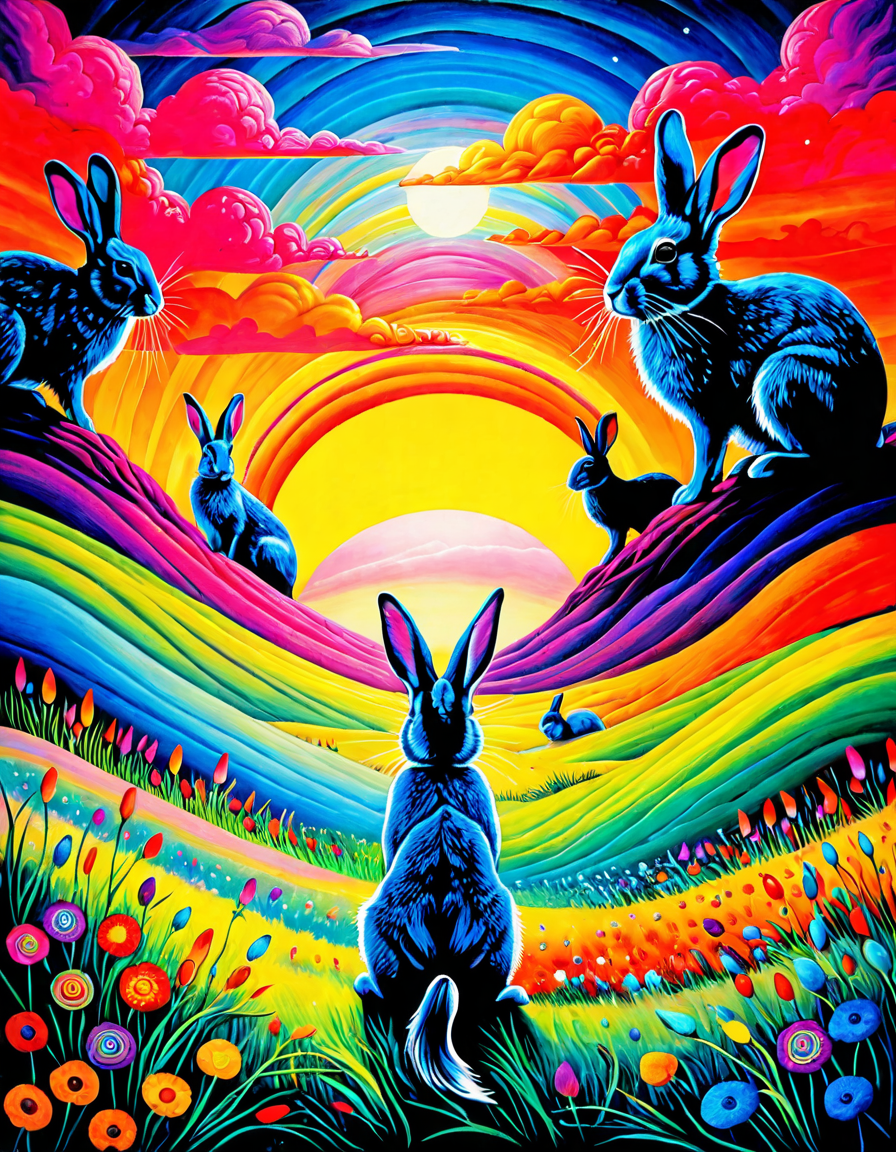
The Cultural Impact of Watership Down and Its Modern Adaptations
Watership Down has managed to maintain cultural relevance through its striking graphic imagery, influencing both current adaptations and genre evolution. The 2018 Netflix version took a stab at balancing darker themes with contemporary storytelling. It attempted to keep the awe and horror alive while updating the narrative for new viewers. This adaptation opened up debates about how to portray adult themes in children’s narratives, creating a bridge between nostalgic fans and a new generation, just like the cast of Everybody Loves Raymond resonates with families today.
Many folks have debated the appropriateness of Watership Down for younger children, especially with its recent PG rating, but the film remains intense and frightening nonetheless. Some schools have even considered banning it, highlighting the need for parent insight into what their kids are watching. Countries like China reportedly banned the film, viewing it as too controversial with its themes placing animals and humans on equal footing. This serves as a glaring reminder of Watership Down‘s impact, far beyond just a simple animated feature.
An Evolving Legacy: The Intersection of Watership Down with Modern Storytelling
As we dive deeper into digital content creation, Watership Down continues shaping narratives across various platforms. From graphic novels to animated series, the essence of the story maintains a potency that resonates with audiences. The allegorical themes embedded within the original tale find themselves reimagined through contemporary lenses, aiming to inspire new audiences who, like fans of Girl Meets World, crave meaningful storytelling.
The ongoing discussions about its themes and visuals indicate how Watership Down can surpass generations in relevance. As viewers shift towards content that challenges, provokes thought, and addresses the harsh realities of life, the lessons presented in both the original and modern adaptations stand as testaments to its enduring narrative power. This movie encourages creators to brave the waters of complex themes, creating stories that resonate deeply and shape our understanding of life, death, and everything in between.
In the end, the graphic elements of Watership Down demonstrate the duality of childhood innocence against life’s harsher truths. This balancing act remains a significant exploration avenue, laying the groundwork for future creators willing to pursue bold storytelling paths. Ultimately, the conversations sparked by this iconic work evolve continually, inviting fresh perspectives and redefined understandings of what animated narratives can achieve.
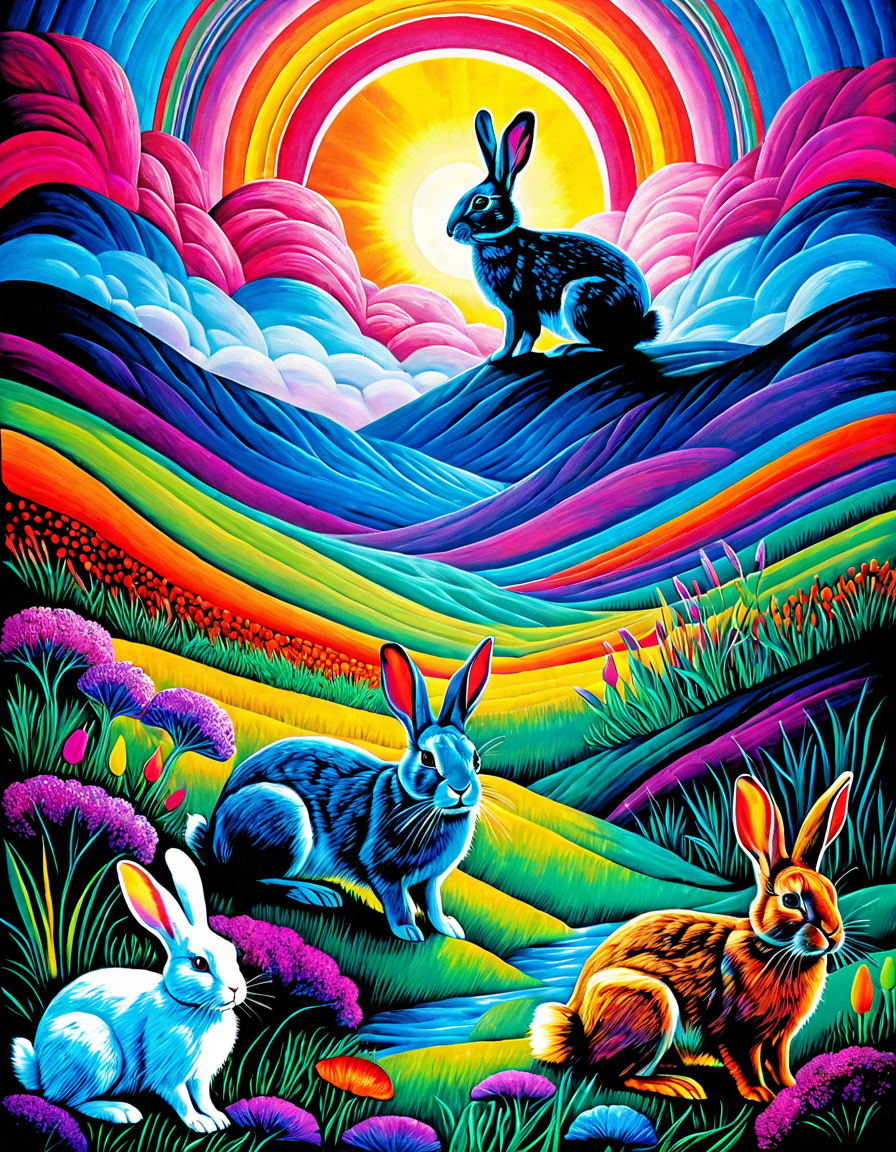
Watership Down: Graphic Imagery That Shocks Audiences
A Dark Turn for Animation
“Watership Down” isn’t just a tale about brave rabbits navigating their world; it’s a blend of vibrant animation and stark, sometimes unsettling imagery that challenges viewers. Originally adapted from Richard Adams’ novel, the film shocked audiences upon its release in 1978, not unlike how fans felt with the infamous “Everybody Loves Raymond” cast in their favorite sitcom moments but with a much darker twist. The scenes of violence and death left many wondering how such imagery made its way into a film that, at first glance, seems designed for children.
The connection between beauty and brutality in “Watership Down” makes it strikingly real. As rabbits face foes like the bloody General Woundwort, the film presents nature’s harsh realities. You can feel the stakes rising like the tension in a horror movie such as Lights Out where viewers are on the edge of their seats. This juxtaposition resonates with audiences today, lending a timeless quality to its bold storytelling as it grapples with themes of survival and freedom.
Legacy and Cultural Impact
Despite the unsettling images, “Watership Down” has left a significant mark on pop culture. Its influence can be seen in various media, from animated projects to intense narratives exploring the struggles of being an underdog. Films sometimes take fans on a road trip through emotional landscapes, making them laugh and cry, all while learning tough lessons about bravery and companionship. Even larger-than-life figures like Reggie Jackson might appreciate the undercurrent of resilience present in this classic, as the rabbits fight against overwhelming odds.
Additionally, the film has inspired discussions around animal rights, as its raw depiction of life evokes empathy, making viewers reconsider their place in nature. Like June Squibbs heartfelt performances, the storytelling in “Watership Down” tugs at the heartstrings—a soft yet powerful reminder of life’s fragility. Watching it today, one can appreciate its artistry and the bold choice to present such complex tales about seemingly simple creatures, transforming the viewing experience into something thought-provoking rather than just entertaining.
Fun Facts to Know
Here’s a fun tidbit: During its production, the film’s creators faced pushback for its graphic scenes, leading to an animated feature less commonly associated with children’s fare. Some might find it necessary, much like a warm compress after a shocking incident, to take a break from all that intensity. Additionally, the iconic voice work, from actor John Hurt to the supporting cast, resembles the kind of talent you would see in a blockbuster hit, showing that even in animated projects, character depth is crucial.
And as you explore more of the animation, don’t forget to appreciate how it laid the groundwork for future films. It opened doors for animated features to explore deeper narratives and showcase the complexities of character emotions, much like how The Kings avatar reveals the layered narratives found in gaming culture. “Watership Down” showcases bravery, friendship, and the reality of struggle, maintaining its relevance in today’s cinematic discussions.
